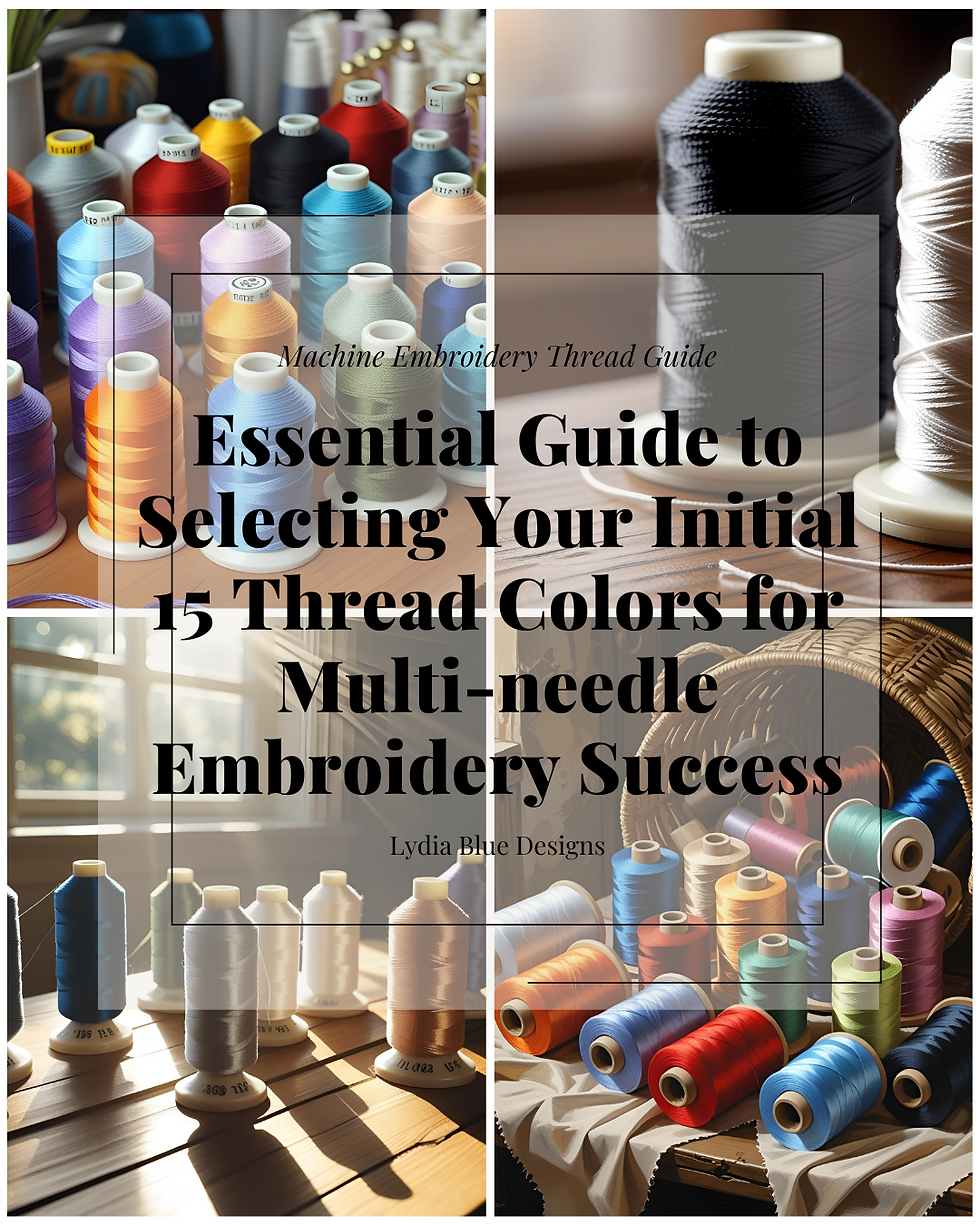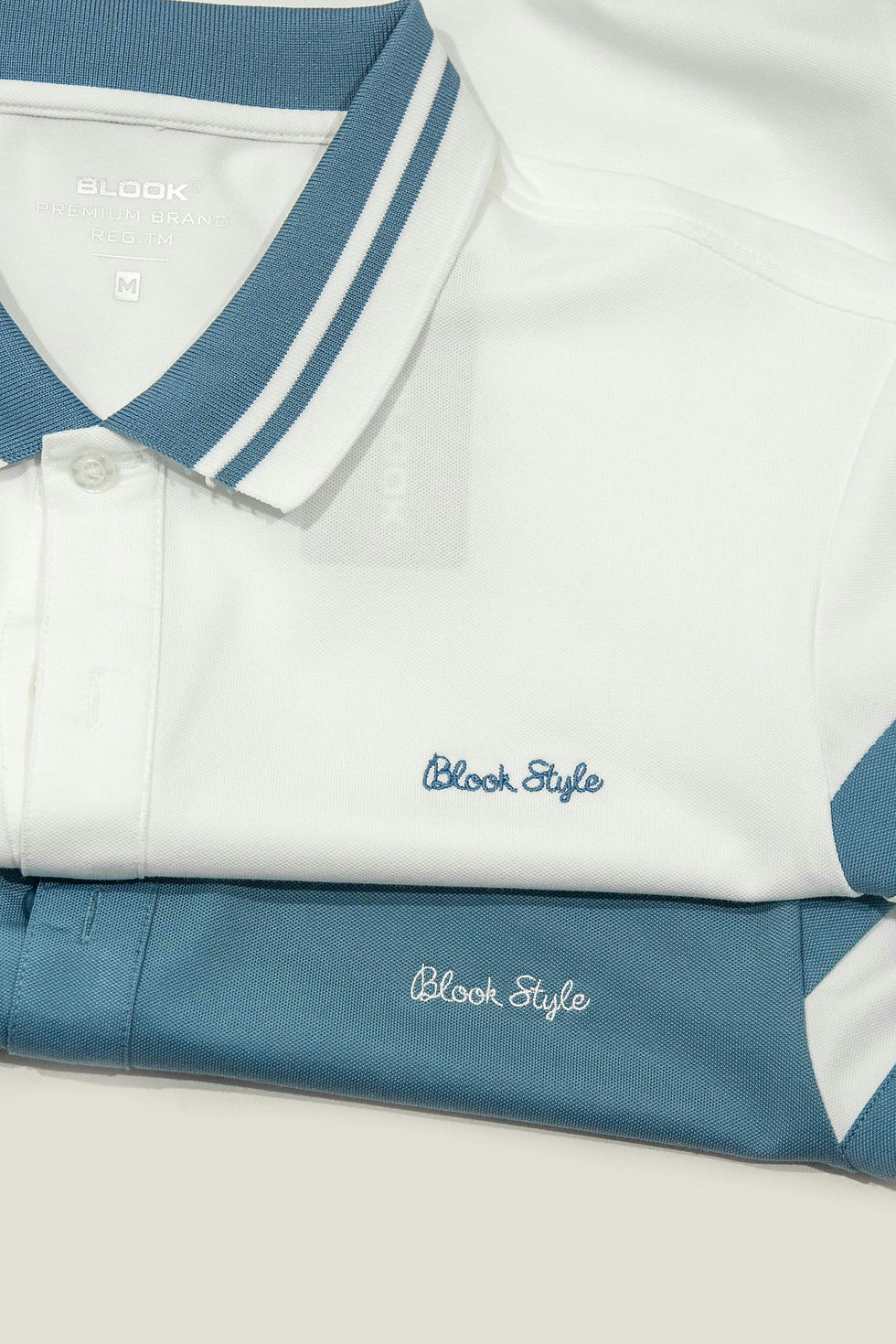Essential Guide to Selecting Your Initial 15 Thread Colors for Multi-needle Embroidery Success
- lydiablue
- Jun 2
- 4 min read
Updated: Jul 2

Embarking on your machine embroidery journey can be thrilling but also a bit overwhelming, especially with the vast array of thread colors available. As a beginner or even a seasoned embroiderer, choosing the right colors is crucial for achieving stunning results. Narrowing it down to just 15 essential colors is a strategic move that can save you money and eliminate clutter in your workspace.
In this guide, we will explore effective practices for selecting those initial colors, ways to keep costs low, and strategies for gradually expanding your thread collection. Just so you know: This post contains affiliate links. That means if you click through and make a purchase, I may earn a small commission—at no additional cost to you!

Understanding Color Basics
Before you select your thread colors, it's vital to understand some color theory basics. Colors can be categorized into primary (red, blue, yellow) and secondary colors (purple, green, orange), which gives you a foundation for a beautiful color palette for your projects.
To illustrate this, consider a floral design: using contrasting colors like yellow and purple can create a vibrant scene, while complementary colors like blue and green add depth and nuance. Think about the types of projects you want to create. Are they lively and bold, or are they subtle and sophisticated?
Selecting Your Essential 15 Thread Colors
Here are 15 essential thread colors to form a versatile foundation for your embroidery projects:
Black - Perfect for outlining and adding definition to your designs.
White - Offers brightness for highlights and contrast against dark fabrics.
Red - A striking color often used to grab attention in various designs.
Blue - A calm, versatile choice that works beautifully across many patterns.
Yellow - A cheery color ideal for vibrant, joyful projects.
Green - Essential for nature-themed designs, bringing a fresh look.
Pink - Great for adding soft touches and charm, especially in floral patterns.
Brown - Perfect for rich, earthy tones, useful in natural designs.
Gray - A neutral color that blends effortlessly, adding subtlety.
10. Purple - Associated with luxury, ideal for elegant touches in designs.
11. Turquoise - A lively color that enhances designs, especially nature motifs.
12. Orange - An energetic choice, excellent for making certain elements pop.
13. Beige - A warm neutral that can represent skin tones or serve as a versatile background.
14. Navy Blue - Provides depth and works well for classic or formal designs.
15. Silver - A luxurious color that adds sophistication to your work.
These 15 colors create a diverse base that allows you to undertake a wide range of projects without the pressure to buy too many options upfront.
Tips for Managing Your Thread Collection

Avoid the 80 Color Trap

Many newcomers feel tempted to buy every color available. Instead, focus on building your skillset with these 15 essential threads. As you grow more confident, you'll naturally discover which additional colors will benefit your designs. Think of every new thread purchase as filling a specific need that enhances your future projects.
Expand Gradually
Once you're comfortable with your initial collection, start considering new shades that complement your existing palette. Look at your most frequently used designs and identify what might be missing. For example, if you often create floral motifs, introducing soft pastel colors or shades of green can enrich your floral designs. Gradually adding colors will help you invest wisely and keep your collection manageable.
Cost-Reducing Strategies for Startup

Buy in Smaller Quantities
When beginning your embroidery journey, consider purchasing thread in smaller quantities, like 200 or 500 meters. This way, you can test colors without committing to large, often unused spools. Smaller spools allow you to explore your options without taking a financial hit.
Look for Thread Bundles
Many brands provide thread packs that contain popular colors at discounted rates. These bundles are a great way to quickly diversify your collection without overspending.
Prioritize Quality
Investing in higher-quality threads may seem more expensive upfront but can save money long-term. Cheap threads often break easily, leading to frustration and wasted material. Stick to reputable brands that are known for their durability, ensuring quality results in your embroidery.
Stay Organized
Keeping your thread collection organized can streamline your creative process. Consider using clear storage containers to categorize and visualize your threads easily, making it simple to find what you need. This organization prevents unnecessary purchases and helps you track your thread usage more effectively.
Final Thoughts
Selecting your initial 15 thread colors for multi-needle embroidery can be manageable and exciting. By focusing on versatile colors and being smart about your budget, you can build a high-quality thread collection.
Starting with a small selection might seem limiting, but it sets the stage for a more fulfilling embroidery experience. As you gain confidence and understand your needs, your thread collection can naturally grow. Enjoy the journey and have fun with your new colors!








Comments